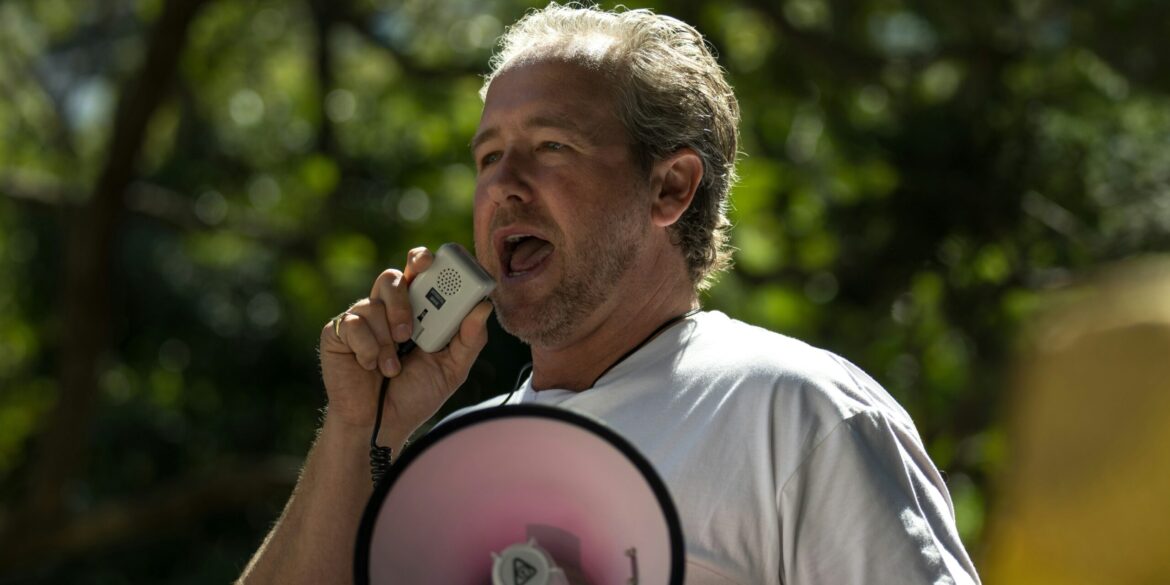Tens of thousands of Americans joined “Good Trouble Lives On” rallies on July 17, 2025, commemorating the fifth anniversary of Congressman John Lewis’s passing. With more than 1,500 peaceful events staged in all 50 states, participants paid tribute to his enduring civil‑rights legacy and called for action on voting rights, equity, and broader social justice issues.
Organized by coalitions including Black Voters Matter, the National Urban League, Public Citizen, and Indivisible, these demonstrations carried forward Lewis’s rallying cry to “get in good trouble, necessary trouble”. Participants engaged in diverse activities—block parties, candlelight vigils, voter‑registration tables, and creative protests like umbrella art in Washington, D.C.—all rooted in nonviolent civic engagement.
In Michigan’s Great Lakes Bay Region and Huron County, over forty made their voices heard outside courthouses, urging congressional action to protect voting rights and opposing cuts to social services. In Utah, multiple cities—including Salt Lake City, Logan, and Provo—hosted rallies echoing this year’s theme, combining local concerns with national mandates for democracy and justice.
Participants across these rallies drew clear connections between Lewis’s life’s work and current events. In Houston, attendees expressed solidarity with immigrant communities and raised concerns about ICE actions, performing chalk art installations at City Hall to amplify marginalized voices. Demonstrators in major urban centers such as Atlanta, Chicago, New York City, and Los Angeles marched, circled federal buildings, laid flowers near murals, and held candlelit vigils—linking Lewis’s memory to contemporary debates over immigration, policing, and democratic norms.
Speakers at many gatherings, including academics, former officials, and civil‑rights veterans, warned of troubling developments such as reproductive‑rights rollbacks, assault on diversity initiatives, and perceived authoritarian shifts under the Trump administration. Their message underscored that Lewis’s philosophy of nonviolent “good trouble” remains relevant as a bulwark against erosion of civil liberties.
In Washington, D.C., retirees and teachers used colorful umbrellas to display slogans—like “We Want Free and Fair Elections”—drawing on creativity and community participation to make political statements without traditional marches. The visual approach echoed earlier symbolic gestures (e.g. Women’s March pussyhats), embracing inclusivity during the peak of summer heat.
Experts and scholars emphasized how this movement draws inspiration and strategy from Lewis’s lifelong activism—from the Freedom Rides and the Selma marches to his congressional work and ethical leadership. For many, the July 17 events were both commemoration and call to action—reinforcing grassroots momentum and peaceful protest amid concerns over democratic backsliding.
Though over 400 events had been publicized ahead of the weekend, the actual tally far surpassed that number by event day, with the “Good Trouble Lives On” campaign maintaining a website listing several hundred demonstrations nationwide. The movement’s scale and diversity reflected its cross-partisan appeal in rural and urban areas, blue and red states alike.
By uniting under John Lewis’s “good trouble” banner, citizens reaffirmed a shared responsibility to protect democracy, voting rights, and social equity. What began as a tribute to a civil‑rights titan evolved into a nationwide affirmation: peaceful, collective action is essential to shaping an inclusive future.

